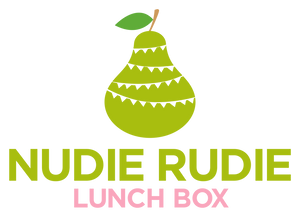· By Julia Boase
Salty Savoury Snacks for the Lunch Box
Let's talk salty savoury snacks in the lunch box.
I enjoy salty snacks as much as the next person (as do my kids) but there's a few things I try to keep in mind as a paediatric dietitian.
When my kids were younger and not as exposed as they are now to the plethora of snacks available, I used to stick to very plain snacks. I mostly tried to avoid anything flavoured because none of these flavours really represents the natural flavours found in food, and I wanted to try and train their palates to enjoy a wide variety of mostly unprocessed foods. As they've got older (and naturally been exposed to more foods) I've included more of these types of snacks in their diets.
One thing I know for sure (and the evidence supports this) is that if you completely restrict access to certain foods, it puts that food on a pedestal and rather than just being able to take or leave a food, kids are more likely to become obsessed with it. These snack foods aren't going to go away, so I'd rather role model to my kids to eat them in moderation and that some choices are better than others.
Some things to consider when looking at salty savoury snacks in the supermarket
🏃♂️ Energy: For snacks, 600kj or less is desirable
🍿 Fat: Look for products with less than 10g of fat per 100g.
🍎 Fibre - Not always included on NIPs. Look for products with more than 4g of fibre per 100g
🧂 Sodium (salt) - Choose the item lowest in sodium. Less than 400mg of sodium per 100g is desirable.
And whilst sugar isn't usually a predominant feature of salty snacks, for completeness it's worth looking at the added sugar content when you choose snacks.
🍬 Carbohydrates - Sugars: Sugar from natural sources such as fruit or milk (lactose) are not associated with health problems. Ideally we want to minimise added sugar in our diet. Foods with more than 15g of sugar are likely to be high in added sugar. Check the ingredient list to check for sources of both natural and added sugar. Ingredients will be listed from most to least, so if sugar features in the first few ingredients the product has more added sugar.
Be aware that added sugar comes in many forms! Look out for these words: sugar, raw sugar, brown sugar, corn syrup, sucrose, fructose, glucose, maple syrup, honey, golden syrup, rice syrup, coconut sugar.
𝗚𝗼𝗼𝗱:
Tostitos lightly salted corn chips - one of the lowest sodium corn chips (281mg/100g). Still a chip though and it has a high fat content. Corn chips are a better source of fibre than potato crisps
Pretzels - watch the sodium content as some are shockingly high, Parkers mini baked are much lower than other brands (556mg/100g) and are my choice. I like pretzels as the ingredient lists tend to be pretty simple.
𝗕𝗲𝘁𝘁𝗲𝗿:
Messy monkeys - these are flavoured but I like them as they are very high in fibre, reasonable sodium and lower fat than than others similar snacks
Ajita natural veggie chips, unflavoured- similar to Messy monkeys above they have more fibre, reasonable sodium and lower fat than similar snacks,
𝗕𝗲𝘀𝘁:
Vita wheat wholegrain crackers
Brown rice cakes (eg sunrice mini bites, unflavoured)
Plain unflavoured brown rice crackers
Popcorn - lightly salted, unflavoured. A great unprocessed snack option. The fat content is often high but as the product is very light, you don't actually consume much.
Julia

Thank you! this is so helpful :)
Pieta on